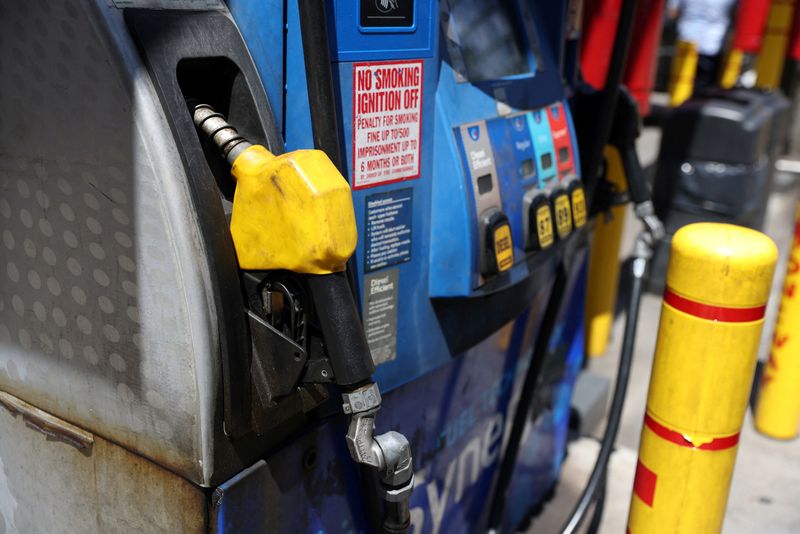Commodities
Oil settles higher but posts fourth straight quarterly decline


© Reuters. FILE PHOTO: A pump is seen at a gas station in Manhattan, New York City, U.S., August 11, 2022. REUTERS/Andrew Kelly/File Photo
By Laura Sanicola
(Reuters) -Oil prices settled higher on Friday but posted their fourth straight quarterly loss as investors worried that sluggish global economic activity could crimp fuel demand.
Benchmark futures for August delivery which expires on Friday, settled up 56 cents, or 0.8%, at $74.90. In the three months to the end of June, the contract finished down 6%.
U.S. West Texas Intermediate crude (WTI) settled up 78 cents, or 1.1% at $70.64 a barrel. It posted its second straight quarterly drop, down about 6.5% in the latest three months.
Prices have been under pressure from rising interest rates in key economies and a slower than expected recovery in Chinese manufacturing and consumption.
Signs of strengthening U.S. economic activity and sharp declines in U.S. oil inventories last week offered some support.
For the day, crude was bolstered by a U.S. Commerce Department report showing annual inflation rising last month at its slowest pace in two years.
Signs of moderating inflation “could hold the Federal Reserve off rising interest rates again,” said John Kilduff, partner at Again Capital LLC in New York.
The market was also supported by upward revisions in demand for and refined products in the United States.
Demand for crude and petroleum products fell slightly to 20.446 million bpd in April but remained seasonally strong, EIA data showed.
Prices also drew support from Saudi Arabia’s plans to cut output by a further 1 million barrels per day in July in addition to a broader OPEC+ deal to limit supply into 2024.
“Despite the announcements of two fresh rounds of cuts from OPEC+/Saudi Arabia, crude prices have largely remained below $80 a barrel as the market has been driven less by fundamentals and more by macroeconomic concerns,” HSBC analysts said in a note.
“We think this will continue to be the case for part of the summer, although the deep deficit of around 2.3 million barrels forecast for 2H23 should help to spur some upwards price momentum.”
A Reuters survey of 37 economists and analysts showed oil prices will struggle for traction this year as global economic headwinds linger.
U.S. energy firms this week cut the number of oil and rigs operating for a ninth week in a row for the first time since July 2020, energy services firm Baker Hughes said on Friday.
Commodities
Oil prices rise; U.S. crude inventories plunge, Russia-Ukraine truce eyed
Commodities
India’s Reliance to stop buying Venezuelan oil over US tariffs, sources say
Commodities
Oil prices climb on Venezuela supply worries

 Forex3 years ago
Forex3 years agoForex Today: the dollar is gaining strength amid gloomy sentiment at the start of the Fed’s week

 Forex3 years ago
Forex3 years agoUnbiased review of Pocket Option broker

 Forex3 years ago
Forex3 years agoDollar to pound sterling exchange rate today: Pound plummeted to its lowest since 1985

 Forex3 years ago
Forex3 years agoHow is the Australian dollar doing today?

 Cryptocurrency3 years ago
Cryptocurrency3 years agoWhat happened in the crypto market – current events today

 World3 years ago
World3 years agoWhy are modern video games an art form?

 Commodities3 years ago
Commodities3 years agoCopper continues to fall in price on expectations of lower demand in China

 Economy3 years ago
Economy3 years agoCrude oil tankers double in price due to EU anti-Russian sanctions





























